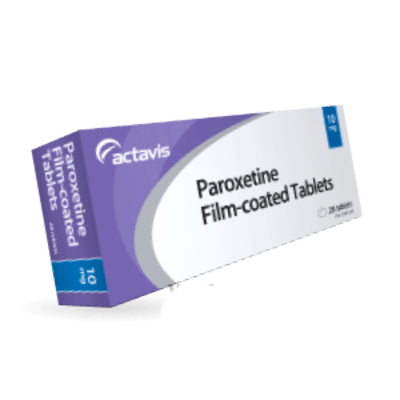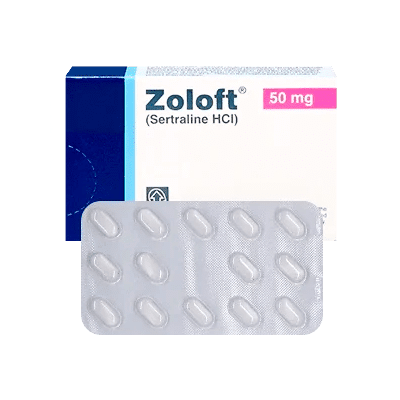I started taking Paxil as prescribed by my doctor to treat depression. The first few weeks were difficult - I was very tired and slightly dizzy, but then my condition stabilized. Now I feel much better, my mood has improved, and my anxiety has gone away.

Paroxetine
Active ingredients: Paroxetine- Quality products
- Support 24/7
- Fast delivery
What is it?
Paroxetine is an antidepressant from the class of selective serotonin reuptake inhibitors (SSRIs), which is actively used to treat various mental and emotional disorders. First approved in the early 1990s, it has found wide application in the treatment of depression, anxiety disorders, obsessive-compulsive disorder (OCD), post-traumatic stress disorder (PTSD), social anxiety disorder, and premenstrual dysphoric disorder (PMDD).
Paroxetine acts by increasing the level of serotonin in the brain, which helps improve mood, reduce anxiety, and normalize sleep. This drug is available in various forms, including immediate-release and controlled-release tablets, as well as suspensions, which allows you to choose the most appropriate treatment regimen for the patient.
Composition
Paroxetine contains the active substance paroxetine, which is the main active component of the drug. In addition to it, the composition of the dosage form includes excipients that ensure the stability, absorption and effectiveness of the drug.
- Active substance: paroxetine (in the form of hydrochloride hemihydrate).
- Excipients: microcrystalline cellulose, magnesium stearate, hypromellose, sodium starch glycolate, calcium phosphate, titanium dioxide, polyethylene glycol and iron oxide (dye for the film coating).
This composition allows for accurate dosing and stable release of the active substance in the body, which helps achieve the desired therapeutic effect
How to use?
The use of Paxil requires strict adherence to the doctors recommendations, since the dosage and duration of treatment may vary depending on the patients condition and response to the drug. Below are general recommendations for the use of Paxil:
- Initial dosage: Usually starts with a low dose (eg, 10-20 mg per day), which can be gradually increased depending on the clinical response and tolerability of the drug.
- Intake of the drug: Tablets should be taken once a day, preferably in the morning to avoid possible sleep disturbance. They can be taken with or without food, with a sufficient amount of water.
- Dosage adjustment: After several weeks of treatment, the doctor may adjust the dose, depending on the patients response to therapy and the presence of side effects.
- Duration of treatment: Treatment can last from several months to a year or more, depending on the severity of the condition and the goals of therapy. Do not stop taking the drug without consulting your doctor, even if you feel better.
It is important to remember that abrupt withdrawal of paroxetine can cause withdrawal symptoms, so the dose should be reduced gradually under the supervision of a doctor.
How does it work?
Paroxetine, the active ingredient in Paxil, belongs to the group of selective serotonin reuptake inhibitors (SSRIs). Its main mechanism of action is associated with increasing serotonin levels in the brain. Serotonin is a neurotransmitter that plays a key role in regulating mood, emotions, and sleep. Depression and some anxiety disorders are characterized by a decrease in serotonin levels, which disrupts these processes.
Paroxetine blocks the reuptake of serotonin by neurons, allowing it to remain active in the synaptic space longer and enhance its positive effect on nerve cells. As a result, serotonergic transmission increases, which leads to improved mood, decreased anxiety, and normalization of the patients psychoemotional state. This process takes time, so the therapeutic effect may appear several weeks after starting to take the drug.
Indications
Paxil is indicated for the treatment of a wide range of mental and emotional disorders, particularly in cases where long-term therapy is needed. The main indications for this drug include:
- Depression: effective in treating episodes of major depression, especially when accompanied by anxiety.
- Obsessive-compulsive disorder (OCD): helps reduce the frequency and intensity of obsessive thoughts and compulsive actions.
- Post-traumatic stress disorder (PTSD): used to reduce symptoms of anxiety and depression caused by traumatic events.
- Social anxiety disorder: reduces levels of social anxiety and helps improve quality of life.
- Panic disorders: reduces the frequency of panic attacks and related symptoms.
- Premenstrual dysphoric disorder (PMDD): alleviates symptoms of depression and irritability associated with the menstrual cycle.
These indications highlight Paxils versatility in treating various forms of anxiety and depression, which makes it one of the key drugs in psychiatric practice
Contraindications
Paxil is contraindicated in a number of cases where its use may pose a serious risk to the patients health. The main contraindications include:
- Allergy to paroxetine: if the patient has hypersensitivity to paroxetine or any of the excipients of the drug, its use is strictly contraindicated.
- Co-administration with MAO inhibitors: concomitant use of Paxil and monoamine oxidase inhibitors (MAO) may cause serious drug interactions, including serotonin syndrome. There should be an interval of at least 14 days between taking these drugs.
- Severe cardiovascular disease: patients with certain cardiovascular disorders should avoid using paroxetine, as it may worsen their condition.
- Pregnancy and lactation: Paxil is not recommended for use during pregnancy, especially in the first trimester, due to the risk of birth defects in the fetus, as well as during breastfeeding, as paroxetine can penetrate into breast milk.
In addition, Paroxetine should be used with caution in patients with seizure disorders, liver or kidney failure, as well as in the elderly, who are more susceptible to the side effects of the drug.
Side effects
Taking Paroxetine may be accompanied by various side effects that vary in frequency and severity. Some of them may be temporary and pass as the body adapts to the drug, while others require consultation with a doctor.
- Common side effects: nausea, headache, drowsiness or insomnia, dry mouth, sweating. These symptoms most often appear at the beginning of treatment and may decrease over time.
- Rare but serious side effects: decreased libido, sexual dysfunction, seizures, hyponatremia (low sodium levels in the blood). These effects require careful monitoring and possible dose adjustment.
- Withdrawal syndrome: abrupt cessation of Paxil may cause symptoms such as dizziness, irritability, anxiety, sleep disturbances. To avoid this, the dose of the drug should be reduced gradually under the supervision of a doctor.
It is important to remember that each patients reaction to the drug may be individual, and side effects may not appear at all or be expressed to varying degrees. If serious side effects occur, you must immediately consult a doctor
Frequently asked questions
Paroxetine Reviews and Experiences
I was prescribed Paxil to treat panic attacks. The drug started helping after about a month, and the attacks became much less frequent. At first there was some drowsiness, but it quickly passed. I am very pleased with the result.
Paxil helped me cope with obsessive-compulsive disorder, which I had suffered from for many years. The drug did not work immediately, but after a couple of months I noticed that I began to worry less about little things and control my actions better. There were almost no side effects.









